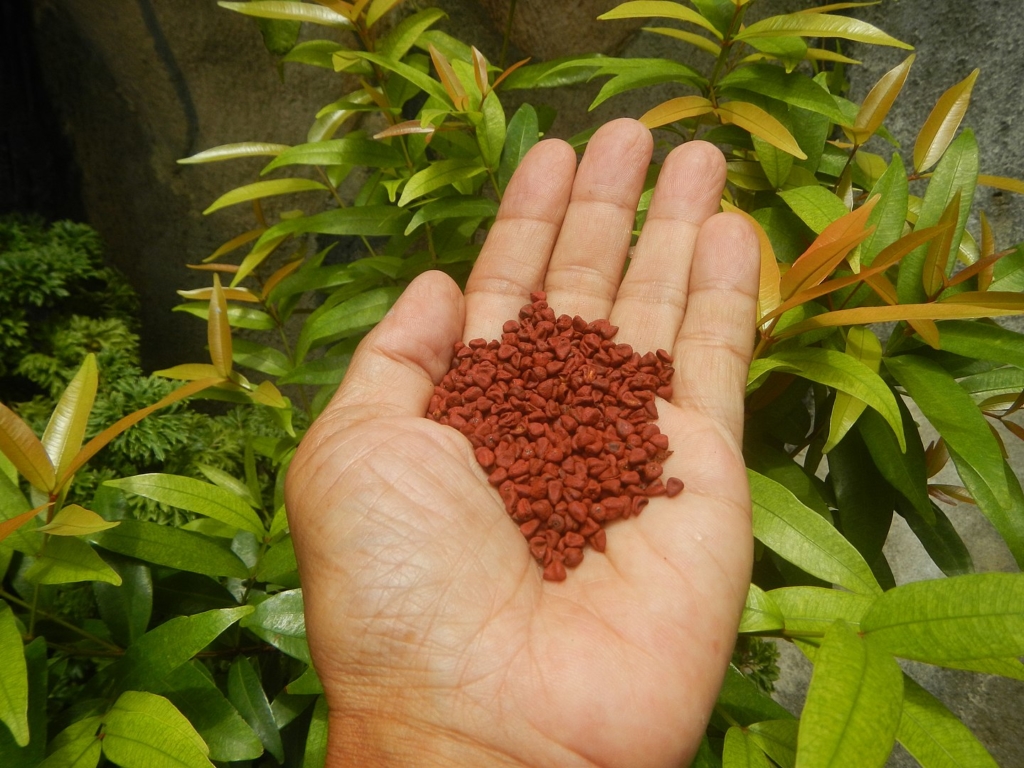These vibrantly colored seeds are an essential ingredient used in cuisines all over the world. A well-kept culinary secret, annatto is a spice so ‘underground’ that you probably didn’t even know that you consume it on the daily!
What is Annatto?

Annatto are the teeny tiny seeds of the achiote tree, a tree native to Central America, South America, and the Caribbean. The seeds are bright orange-red and contained in spiky, heart-shaped, husks. Annatto serves dual purposes in the culinary world. First, as a color enhancing ingredient and, secondly, as a flavoring agent. This duality has made annatto a vital and exciting ingredient used in many cuisines.
History
For centuries annatto was primarily used as a dye. Native Central and South Americans crushed the seeds and extracted the pigment to be used in rituals, as paint (for the home, text, and body), and for medicinal purposes (an effective bug repellent and sunscreen). Over time, annatto expanded into the kitchen and adapted into a coveted cooking ingredient.
Flavor & Uses

Annatto is mellow in flavor with mild nutty notes of pepper, nutmeg, and a slight hint of sweetness. Annatto is most commonly found crushed into a powder or as a prominent ingredient in spice blends. When prepared, annatto is most often blended with other ingredients to form a paste or added to liquids to enhance the color and flavor. Popular dishes, such as cochinita pibil (slow-roasted pork) or arroz con pollo (chicken and rice) are strongly seasoned with annatto.
Annatto’s commercial reach often far exceeds its in-home use. As a color enhancer, annatto is used to give butter and margarine it’s yellow hue. Cheddar cheese producers have been using annatto for years to color their cheeses; cheddar’s bright orange hue comes from annatto.
Annatto can typically be found in the spice section of most Latin or Asian grocery stores. You can also buy annatto online. When stored as whole seeds or as a powder, annatto can keep for months at room temperature along with other spices.
Feature Image: Leonardo Ré-Jorge – Own work, CC BY-SA 4.0,



